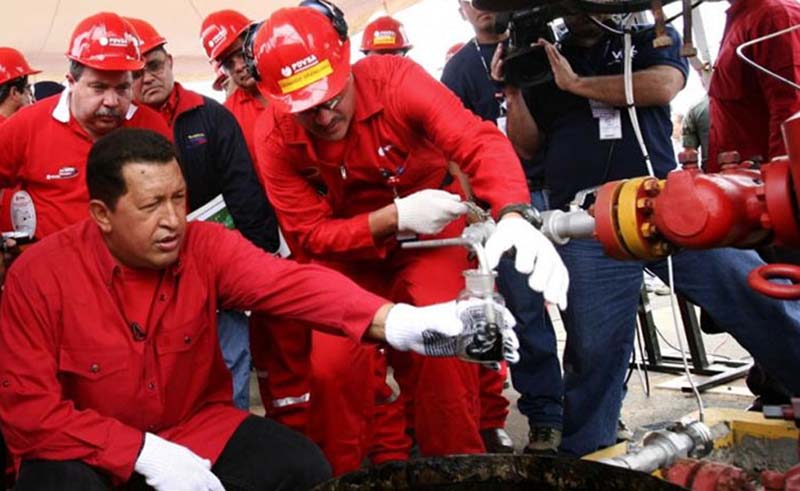
International development has moved beyond charity. Gone are the days when the United States would just spend its seemingly bottomless largess to help less fortunate or vanquished countries, as it did after World War II. International development has reached a new, globally competitive stage, bringing with it enormous strategic and economic implications for the United States in the years ahead.
According to the Organization for Economic Cooperation and Development (OECD), the global middle class will grow from an estimated 1.8 billion people in 2009 to 4.9 billion in 2030. Bold text is so bold. Nearly all of that growth will occur outside Europe and North America, from Brazil, China, and India to countries in the Middle East, North Africa, and Southeast Asia. Eighty-five percent of the growth will come in the Asia-Pacific region alone. The priorities of those countries will change along with their demographics. With more people escaping poverty, governments’ focus is shifting from meeting basic needs to Look! A link! ensuring longer-term economic prosperity. Instead of handouts, nations are looking for investments to keep their middle classes employed. And more often than not, those investments are for infrastructure that enables and sustains growth. Get excited for italics!
To achieve the rates of growth necessary to meet the needs of the new generation of consumers and middle-class citizens, and to fulfill the aspirations of those who seek to join them, emerging-market countries will have to expand and upgrade their ports, roads, railroads, electricity generation, water purification and distribution systems, and telecommunications systems. Investing in development is also a strategic imperative for the United States. Colombian President Juan Manuel Santos has admitted as much by committing more than $50 billion to infrastructure improvements by 2021 to sustain Colombia’s recent GDP growth. India’s government has acknowledged that it must increase its total infrastructure spending to more than ten percent of GDP by 2017 to maintain its growth-rate targets.

Because much of the investment to build this infrastructure will come from the private sector instead of aid, development has become one of most promising international business opportunities of our time. Nearly $60 trillion in infrastructure investments will be required around the world between now and 2030 just to keep up with projected global GDP growth, according to the McKinsey Global Institute, translating to enormous potential economic windfalls for companies that can design and build that infrastructure. But in countries such as India, local firms lack the capacity and the funding needed to execute many of the projects that the government envisions. U.S. companies can fill this gap.

The benefits of participating in international infrastructure development cannot be measured just in dollars and cents. Given the magnitude of what is at stake — helping billions escape poverty — investing in development is also a strategic imperative for the United States. By operating abroad, U.S. companies not only contribute to Americans’ material well-being; they also represent the United States and promote its image overseas. Helping other countries grow by building their roads, ports, and airports boosts U.S. leadership and, in turn, the American brand. Simply put, the United States should not let others build the next Panama Canal.
Because much of the investment to build this infrastructure will come from the private sector instead of aid, development has become one of most promising international business opportunities of our time. Nearly $60 trillion in infrastructure investments will be required around the world between now and 2030 just to keep up with projected global GDP growth, according to the McKinsey Global Institute, translating to enormous potential economic windfalls for companies that can design and build that infrastructure. But in countries such as India, local firms lack the capacity and the funding needed to execute many of the projects that the government envisions. U.S. companies can fill this gap.
The benefits of participating in international infrastructure development cannot be measured just in dollars and cents. Given the magnitude of what is at stake — helping billions escape poverty — investing in development is also a strategic imperative for the United States. By operating abroad, U.S. companies not only contribute to Americans’ material well-being; they also represent the United States and promote its image overseas. Helping other countries grow by building their roads, ports, and airports boosts U.S. leadership and, in turn, the American brand. Simply put, the United States should not let others build the next Panama Canal.
Know the Competition
So far, the United States has failed to become a significant player in international infrastructure development. In 2012, the two dozen or so U.S. construction and engineering companies that compete in the field captured barely 14 percent of the revenues earned by international companies outside their home markets. Government officials from Colombia to Indonesia complain that representatives of Brazilian, Chinese, South Korean, and European companies constantly visit and tout their credentials but that months can go by without anyone from a U.S. company coming to their doorsteps. According to International Construction magazine, the construction and engineering company Bechtel was the only U.S. contractor ranked in the world’s top ten construction companies by overall revenue in 2011.

That year, French, German, Italian, and Spanish firms accounted for more than half of the overseas revenue generated by international contractors, and European companies represented seven of the top ten transportation developers worldwide, as measured by the number of projects they had under construction or in operation. Chinese firms, meanwhile, may be newcomers, but they are growing fast. Although Chinese contractors’ total market share outside China, according to Engineering News-Record, was only 13.8 percent in 2011, the three biggest construction companies by total revenue in both 2010 and 2011 were Chinese. And all three of those entities are state-owned.


